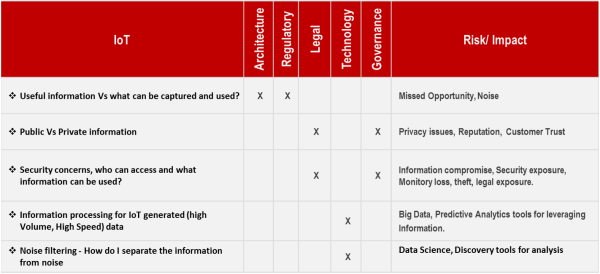It is amazing to see the technology terms we come up with to explain new technology or trend. The consulting thought leadership coins the words to group a set of technology, trend to make it easier for people to have a context. However the success and adoption of the technology/trend defines the term’s reputation. For example Data warehouse was an in-thing only to be shunned when it did not deliver on its promises. Industry quickly realized the mistake and called it Business Intelligence and hid Data Warehouse behind BI until things settled. Now no one questions value of DW or EDW or perceive that as a risky project.
Some terms are really great and they are here to stay for a long time. Some withers away, some change and take a different meaning. One such term which got my attention is IoT – Internet of Things – what is this? It sounds like ‘Those things’ but really what is this trend or technology?
Wikipedia gives you this definition:
“The Internet of Things (IoT) is the interconnection of uniquely identifiable embedded computing devices within the existing Internet infrastructure. Typically, IoT is expected to offer advanced connectivity of devices, systems, and services that goes beyond machine-to-machine communications (M2M) and covers a variety of protocols, domains, and applications.[1] The interconnection of these embedded devices (including smart objects), is expected to usher in automation in nearly all fields, while also enabling advanced applications like a Smart Grid.[2]”
That is a lot of stuff. Looks like pretty much everything we do with Internet. I am sure this term will change and take shape. But let’s look how this relates to Enterprise Data Management. So from an enterprise data perspective, Let us consider a subset of IoT – machine generated internet data and consolidation of data from the systems operating on the cloud. What we end up with is a whole lot of data which is new, and also not in the traditional Enterprise Data framework. The impact and exposure are real, and much of the IoT data may live outside the firewalls.
In essence, the Enterprise Data Management need to deal with the added dimension of Architecture, Technology, and Governance of IoT. Considering IoT Data as out of scope for Enterprise Data Management will lead to more issues than it can solve, especially if you are generating or depend on the IoT data.

